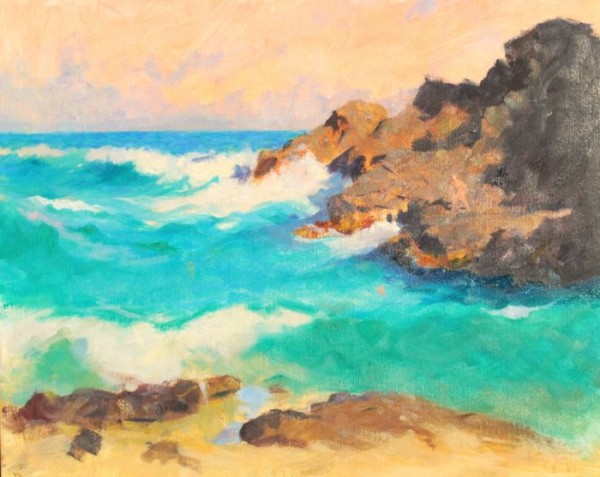
Welcome back.
The painting of Halona Cove was at this stage where I left off in the last post.
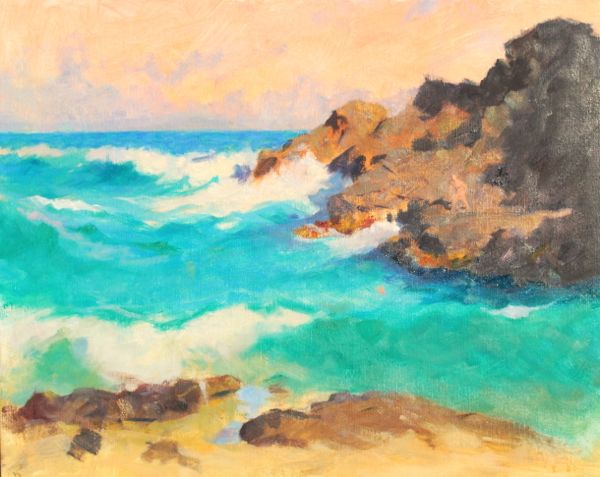 Divers, Halona Cove 16 x 20″, oil on stretched linen
Divers, Halona Cove 16 x 20″, oil on stretched linen
At this stage of the painting the pattern of the shapes (land masses, “whites” of the waves, the shape of the dark shadow, figures, and simple color) are all in place and ready for further development where appropriate.
This stage is the structure of the painting; if I have any misgivings about the composition they must be addressed by now. A figure is suggested among the rocks, and in the water as well.
Step back before moving forward
Before I move forward in this next plein-air session, I pause to refer to my original concept sketch to see if I’m heading where I’d intended.
NOTE: When painting outdoors, and probably even more with the ocean, it’s very easy to get seduced by all of the activity in the subject…and led away from what is important, the strategy of where the viewer’s eye travels in the painting, and what it finds along the way. I always have to watch this carefully.
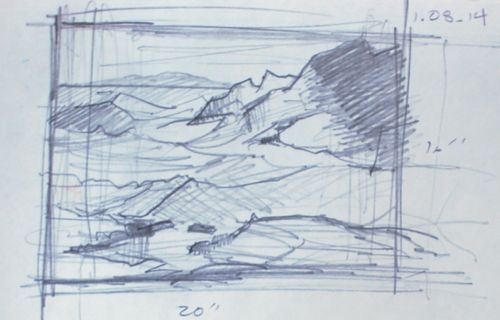 Using the original sketch to reaffirm my goal of the work (essentially, capturing the light of this time of day in this particularly powerful place in an energizing way) I set up my easel for a third , (or is it now a fourth?) session.
Using the original sketch to reaffirm my goal of the work (essentially, capturing the light of this time of day in this particularly powerful place in an energizing way) I set up my easel for a third , (or is it now a fourth?) session.
Building and refining the colors and values
The weather has been really kind. That means the light is the same as last session, and I’m able to get down to work on the various “notes” of color, and developing the dark/light relationships.
I’m also trying to keep the brushwork fresh and descriptive, and especially while capturing the colors in the water. Unlike some other painters, I seem to use a number of brushes at this stage, possibly as many as 12-15. This way I can keep each note of color distinct and get the stroke in the shape I want.
My palette for the water includes Ultramarine, Cerulean, Viridian, and Yellow Ochre, possibly a touch of a Cadmium Yellow. Darks can be helped in the water by a bit of Alizarin Crimson and Viridan, which creates a fascinating transparent grey that is very suitable for this work. At this stage the “whites” are keyed down to a lavender gray of varying warmth and coolness. There is probably no “straight”, pure white in the painting. I’m also using a Schmincke Manganese Cobalt Blue that I believe is helpful. And there is Ivory Black on my palette, which I find helpful and useful in the darks.
Painting the figures
The figures are ready to be placed directly into their positions and I do so, referring very loosely to actual figures in the scene before me for color, but still relying on the sketchbook drawings for position and gesture. They form a generally pyramidal shape as a group, and I push the gesture and color as far as I can without losing the simplicity of the brushstroke.
The water and especially the whites of the waves also receive more attention. I’m building up the paint so that these loaded whites physically catch the light falling onto the canvas in a way that contributes to the sense of foaming, breaking , dazzling white water. These whites are a powerful compositional tool….where they are placed is where the eye will go, and their shapes should work on the canvas as an effective design pattern. I find that to be much more important than clutter or details in the water, as I mentioned in the first post. The whites are also warmed or cooled, sometimes rather subtly, to create variety.
So as I develop these concerns, I’m aware that the painting is reaching a point where any further work will not really help the overall look of the painting, but actually start to work against the vitality that I would like it to possess.
After adjusting some more elements, and defining ever so slightly the island of Molokai off on the horizon, I then back away from the painting for a day or two, then give it a fresh look and decide that it’s ready to be signed. 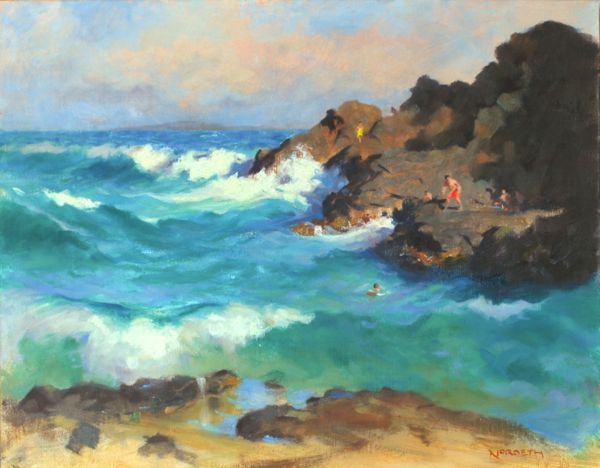 Divers, Halona Cove oil, 16 x 20″ January 2013
Divers, Halona Cove oil, 16 x 20″ January 2013
Thanks for your interest in reading the post, I hope it’s interesting and helpful!


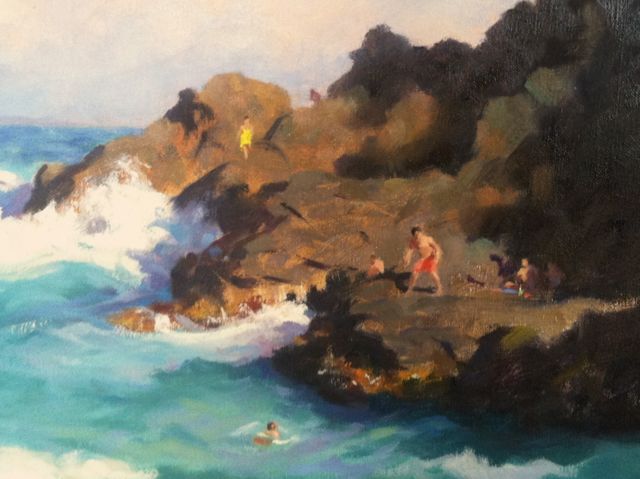
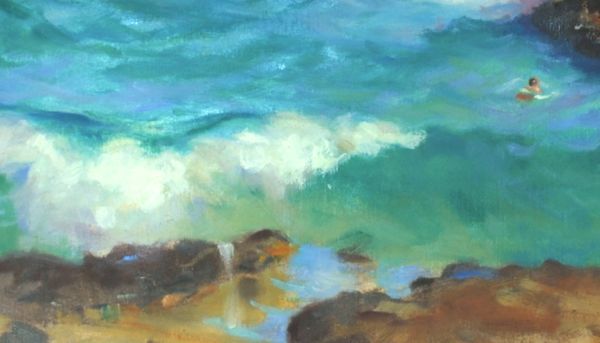
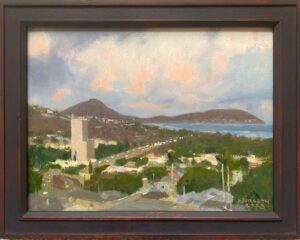
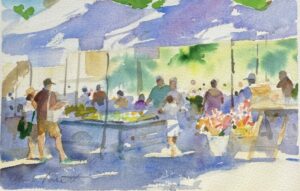
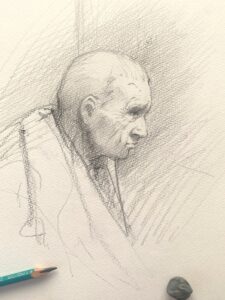
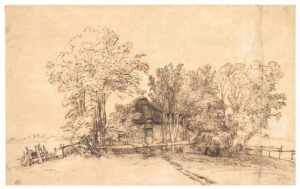
No comment yet, add your voice below!